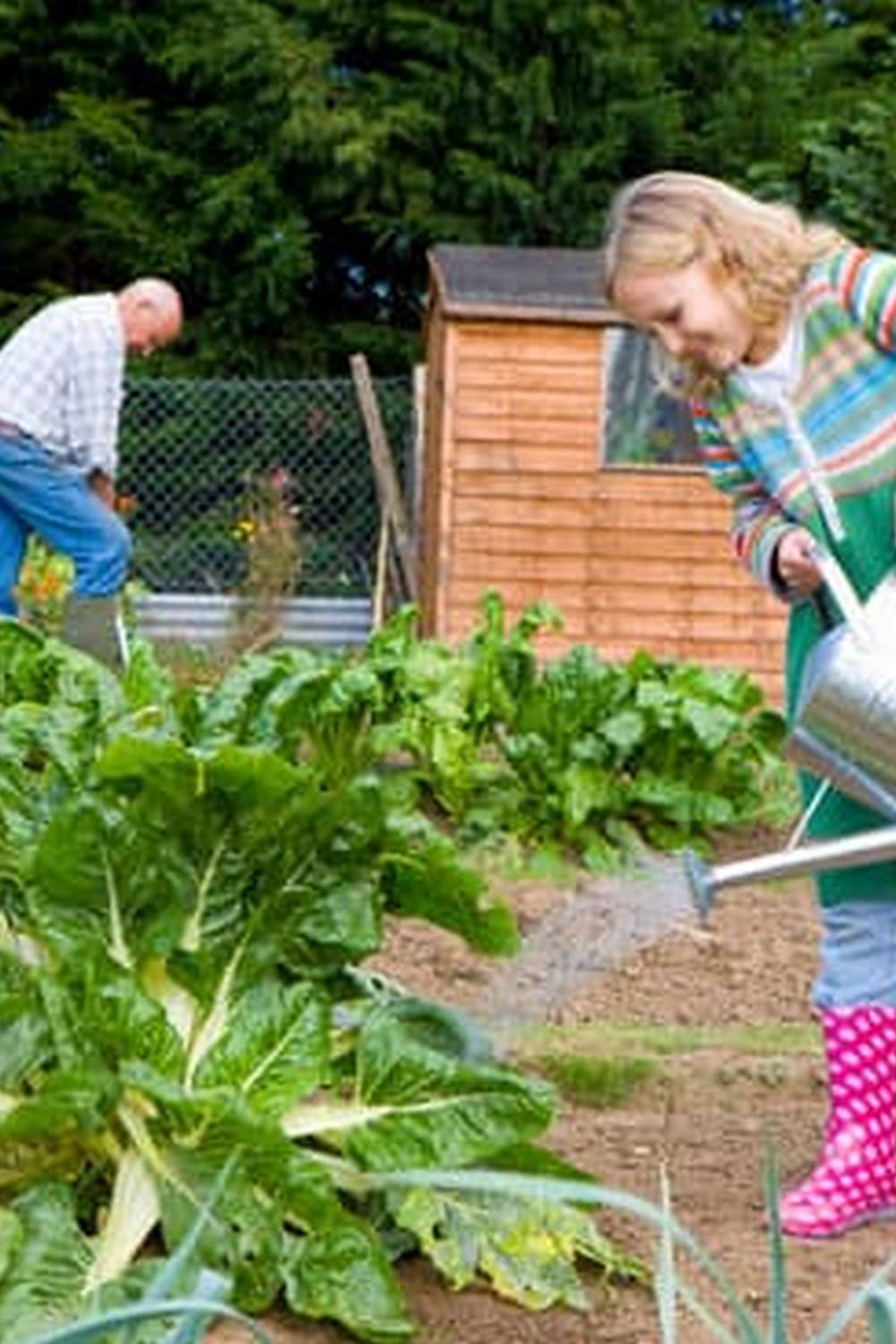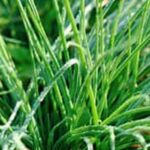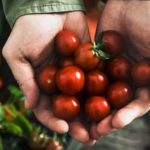Are you looking to start your own small vegetable garden but not sure where to begin? Master gardener ideas can provide valuable insights and guidance to help you kickstart your gardening journey successfully. Whether you’re a beginner or a seasoned gardener, incorporating expert tips can make a significant difference in the growth and productivity of your plants.
Master gardener ideas are essential for starting a small vegetable garden as they offer proven techniques and strategies that can optimize space, enhance plant health, and increase yield. These ideas have been curated by experienced gardeners who have honed their skills over time, ensuring that you benefit from their knowledge right from the start. By following these recommendations, you can set up a thriving vegetable garden even in limited space.
From selecting the right location to choosing beginner-friendly vegetables to plant, master gardener ideas cover every aspect of starting a small vegetable garden. By understanding the principles behind these ideas and implementing them effectively, you can create a productive and rewarding gardening experience. So let’s delve into the world of master gardener ideas and discover how you can cultivate your own flourishing small vegetable garden.
Choosing the Right Location
When it comes to starting a small vegetable garden, choosing the right location is crucial for the success of your plants. One key consideration is sunlight – vegetables typically require at least 6 hours of direct sunlight daily. Look for a spot in your yard that receives ample sunlight throughout the day. Additionally, ensure that the area has good drainage to prevent waterlogging, as excess moisture can lead to root rot and other issues.
Soil Quality and Composition
Another important factor to consider when selecting the location for your small vegetable garden is soil quality and composition. Ideally, you want to choose an area with well-draining soil that is rich in organic matter. Consider conducting a soil test to determine the pH level and nutrient content of the soil in your chosen location. This will help you make any necessary amendments before planting your vegetables.
Proximity to Water Source
Convenience is key when it comes to maintaining a thriving vegetable garden, so consider proximity to a water source when choosing the location. Make sure that your garden is within reach of a hose or irrigation system so that watering your plants is easy and efficient. Adequate water supply is essential for healthy plant growth, especially during hot summer months, so this factor should not be overlooked in your decision-making process.
By carefully considering factors such as sunlight exposure, soil quality, and proximity to a water source, you can select the ideal spot for your small vegetable garden. Taking the time to choose the right location will set the foundation for successful gardening and give your plants the best possible chance of thriving throughout the growing season.
Garden Layout
When it comes to starting a small vegetable garden, utilizing the available space efficiently is key. Master gardener ideas for designing the layout of your garden can help you make the most of limited space while still reaping a bountiful harvest. Here are some design ideas and inspiration for maximizing space in your small garden:
- Vertical Gardening: Consider using trellises, hanging baskets, or vertical planters to grow vine plants like tomatoes, cucumbers, or pole beans. This allows you to save ground space and take advantage of vertical spaces.
- Companion Planting: Planting compatible vegetables together not only maximizes space but also benefits from natural pest control and improved pollination. For example, planting onions with carrots or basil with tomatoes can help enhance growth and flavor.
- Square Foot Gardening: This popular gardening method involves dividing your garden into square foot sections to maximize yields. By carefully planning out what to plant in each square foot, you can grow a variety of vegetables in a small area.
In addition to these design ideas, incorporating raised beds or container gardening can also help optimize space in a small vegetable garden. Raised beds provide better drainage and soil quality, while containers allow for flexibility in placement and mobility. By getting creative with your garden layout and following master gardener tips, you can create a thriving vegetable garden regardless of its size.
Finally, don’t forget to consider the needs of each plant when planning your garden layout. Think about factors such as sunlight exposure, water requirements, and plant height to ensure that each vegetable has the best chance of success in your small garden. With careful planning and implementation of master gardener ideas for layout design, you can enjoy a productive and beautiful small vegetable garden right at home.
Essential Tools and Supplies
Starting a small vegetable garden with master gardener ideas requires the right tools and supplies to ensure successful growth and maintenance of your plants. One essential item for gardening in a confined space is a good pair of pruning shears for trimming and shaping your plants. Additionally, a small hand trowel can be handy for planting seedlings and removing weeds in tight areas.
Another must-have tool for maintaining a small vegetable garden is a watering can with a narrow spout. This allows you to water your plants precisely without causing damage to neighboring crops. A lightweight garden hose with an adjustable nozzle is also useful for reaching all corners of your garden and providing consistent moisture to your vegetables.
In terms of supplies, high-quality potting soil is crucial for small-space gardening as it provides the necessary nutrients for healthy plant growth. Consider investing in organic fertilizers to maintain soil fertility over time without the use of synthetic chemicals. Lastly, having a reliable set of gloves to protect your hands while working in the garden is essential for a comfortable gardening experience.
| Essential Gardening Tools | Supplies |
|---|---|
| Pruning Shears | High-Quality Potting Soil |
| Hand Trowel | Organic Fertilizers |
| Watering Can | Gloves |
Selecting the Right Vegetables
When starting a small vegetable garden, selecting the right vegetables to grow is crucial for success. As a beginner gardener, it’s important to choose plants that are easy to grow and maintain in limited space. Here are some recommendations for beginner-friendly vegetables that are well-suited for small gardens:
Leafy Greens
Leafy greens such as lettuce, spinach, kale, and arugula are perfect choices for small gardens. They can be grown in containers or small raised beds and don’t require a lot of space. These vegetables also have relatively short growing seasons, making them ideal for quick harvests.
Herbs
Herbs like basil, parsley, chives, and mint are not only flavorful additions to your meals but also excellent candidates for small garden spaces. Many herbs can thrive in pots on a sunny windowsill or balcony, making them suitable for urban gardening as well. Herbs are generally low-maintenance and can be harvested frequently for fresh flavor.
Tomatoes
While tomatoes do require a bit more attention than some other vegetables, they can still be successfully grown in small spaces with proper care. Compact or determinate varieties that don’t sprawl too much are best suited for small gardens. Container gardening works well for tomatoes, and they can even be grown vertically using trellises or cages to save space.
By choosing these beginner-friendly vegetables for your small garden, you can enjoy a bountiful harvest while learning valuable gardening skills along the way. Remember to provide ample sunlight, water regularly, and feed your plants as needed to ensure healthy growth and delicious produce all season long.
Planting and Maintenance
Planting and maintaining a small vegetable garden requires attention to detail and regular care to ensure successful growth and bountiful harvests. Here are some step-by-step guidelines to help you navigate the process:
- Choose the right time for planting: Depending on the climate and region you are in, it is important to plant your vegetables at the appropriate time. Consult a planting calendar or local nursery for guidance on when to start.
- Prepare the soil: Before planting, make sure your soil is well-drained and nutrient-rich. You can add compost or organic matter to improve soil quality and provide essential nutrients for your plants.
- Planting seeds or seedlings: Follow the recommended spacing guidelines for each vegetable variety to ensure they have enough room to grow. Consider using raised beds or containers for small gardens to maximize space.
Proper watering is crucial for the health and growth of your vegetables. Here are some tips for watering your small vegetable garden effectively:
- Water deeply but infrequently: Instead of shallow watering daily, it is better to water deeply less often to encourage deep root growth.
- Mulch around plants: Mulching helps retain moisture in the soil, reduces weed growth, and regulates soil temperature. Use organic mulches like straw or wood chips.
- Monitor plant needs: Different vegetables have varying water requirements, so pay attention to signs of stress like wilting leaves or dry soil.
In addition to planting and watering, caring for your small vegetable garden also involves regular maintenance tasks such as fertilizing, weeding, and pruning. By staying on top of these tasks, you can ensure that your garden remains healthy and productive throughout the growing season.
By following these step-by-step guidelines for planting, watering, and caring for your small vegetable garden, you can enjoy a rewarding gardening experience while reaping the benefits of fresh, homegrown produce right in your backyard.
Pest Control and Disease Prevention
When it comes to maintaining a healthy and thriving small vegetable garden, pest control and disease prevention are crucial aspects to consider. One effective strategy is to practice crop rotation, which involves changing the planting location of crops each year.
This helps prevent the buildup of pests and diseases in the soil, leading to healthier plants overall. Additionally, interplanting different types of vegetables can deter pests by confusing them and making it harder for them to find their preferred host plants.
Another key aspect of pest control is implementing physical barriers such as row covers or netting to protect your plants from insects. These barriers not only prevent pests from reaching your crops but also create a microclimate that can promote healthy growth. Furthermore, companion planting is a natural way to repel pests by using certain plant combinations that benefit each other.
In terms of disease prevention, proper spacing between plants is essential to ensure good air circulation and reduce the risk of fungal infections. It’s also important to monitor your garden regularly for any signs of disease so that you can take immediate action if needed. Organic fungicides or homemade remedies like neem oil can be used as a preventative measure against common plant diseases in a small vegetable garden.
| Pest Control Strategies | Disease Prevention Techniques |
|---|---|
| Crop rotation | Proper spacing between plants |
| Interplanting different vegetables | Regular monitoring for disease signs |
| Physical barriers like row covers | Use of organic fungicides or homemade remedies |
Harvesting and Enjoying Your Produce
As you embark on the journey of cultivating your own small vegetable garden, it is essential to have a clear understanding of when and how to harvest your produce. Harvesting at the right time ensures that you enjoy optimal flavor and freshness from your vegetables.
One key aspect to keep in mind is that different vegetables have varying indicators that signal they are ready for harvest. The guidance from a master gardener can provide valuable insights into recognizing these signs, whether it’s the color, size, or texture of the vegetable.
In addition to knowing when to harvest, understanding the proper techniques for harvesting each type of vegetable is crucial for maintaining plant health and maximizing yields. A master gardener can offer expert advice on the best practices for harvesting different vegetables, such as using sharp scissors for delicate herbs or gently twisting cucumbers off the vine. By following these tips, you can ensure that your hard work pays off with an abundant harvest of fresh, flavorful produce.
Once you have harvested your homegrown vegetables, it’s time to savor the fruits of your labor by incorporating them into delicious recipes. From simple salads to hearty soups and stir-fries, there are endless culinary possibilities when it comes to using your garden-fresh produce.
A master gardener can provide creative recipe ideas that celebrate the flavors of your homegrown vegetables and inspire you to experiment with new dishes. By exploring different cooking methods and flavor combinations, you can truly appreciate the quality and taste of your small vegetable garden’s bounty.
Frequently Asked Questions
What Is the Best Layout for a Vegetable Garden?
The best layout for a vegetable garden depends on factors like the available space, sunlight exposure, and soil quality. A traditional row layout is common and efficient for easy access to plants for watering, weeding, and harvesting.
How Do You Organize a Small Vegetable Garden?
Organizing a small vegetable garden involves maximizing the use of limited space. Using vertical gardening techniques like trellises or hanging baskets can help grow more plants in a small area. Grouping vegetables with similar watering and sunlight needs together can also optimize space.
What Does Every Vegetable Gardener Need?
Every vegetable gardener needs essential tools like a shovel, hoe, gloves, and pruning shears to maintain the garden effectively. Quality seeds or seedlings are crucial for a successful harvest while fertilizer, compost, and mulch help ensure healthy plant growth. Watering cans or hoses are necessary for proper hydration of plants.

If you’re looking to get into vegetable gardening, or are just looking for some tips on how to make your current garden better, then you’ve come to the right place! My name is Ethel and I have been gardening for years. In this blog, I’m going to share with you some of my best tips on how to create a successful vegetable garden.





